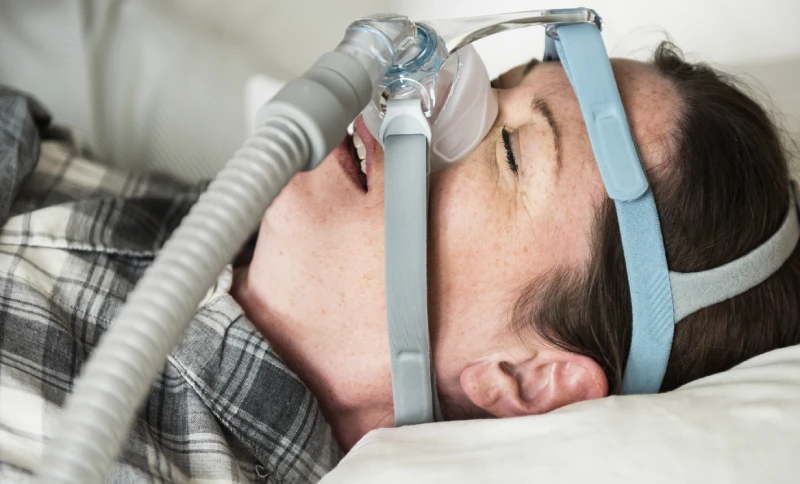Sleep apnea is a common sleep disorder that occurs when breathing is interrupted during sleep. The person stops breathing partially or completely many times during sleep. Breathing stops for several seconds or even for minutes. If the interruptions in breathing are long enough, the oxygen level in the blood drops, leading to other medical problems.
There are two types of sleep disorder:
- Central sleep apnea (CSA), which occurs when there is instability in the respiratory control center and the brain ‘forgets’ to tell the muscles to breathe
- Obstructive sleep apnea (OSA), the common type which is caused when the soft tissue in the throat area collapses during sleep, resulting in blockage of the airway
A person can have both CSA and OSA.
Symptoms
Loud snoring is a typical symptom of sleep apnea, though not a decisive one. In addition to difficulty staying asleep, people with OSA may be drowsy and fall asleep during the daytime. Suddenly waking up with a shortness of breath, waking with a dry mouth or sore throat, headaches and attention problems are also symptoms of this sleeping disorder.
Effects
OSA is likely to affect men who are overweight and over the age of 40, with risk factors such as a large neck size, large tonsils, a large tongue, or a small jaw bone. Nasal obstruction due to a deviated septum, allergies, or sinus problems too can cause sleep apnea. Genetics and a digestive disorder called gastroesophageal reflux are also risk factors for OSA.
In addition to poor performance in everyday activities, people with OSA may suffer from
- Headaches
- Heart disease
- Diabetes
- Depression
- High blood pressure
- Stroke
- Liver problems
- Attention-deficit/hyperactivity disorder (ADHD) in children
Overcoming Sleep Apnea Challenges
If the symptoms of sleep apnea persist, it is important to see your physician. OSA can be effectively treated. Measures include:
- Continuous positive airway pressure (CPAP) therapy involves the use of a special air pumping device. You wear a mask connected by a hose to the device, which pumps air to keep your airway open.
- Wearing oral breathing devices and devices such as nasal dilators during sleep are also a solution to the condition.
- Medicines are not usually recommended to treat sleep apnea. Even when using CPAP, daytime drowsiness may persist and in such cases, medicines are prescribed to reduce sleepiness. People taking such medication need to take CPAP therapy too.
- Surgery is usually recommended when other options fail to work. When the condition occurs due to overweight, bariatric surgery could provide the solution. Other surgical options include maxillo-mandibular advancement (MMA) to increase the size of the airway, radiofrequency ablation (RFA) to reduce the size of the tongue to allow more airflow to the lungs, uvulopalatopharyngoplasty (UPPP) for adults, and tonsillectomy for children.
- Rhinoplasty, the plastic surgery procedure performed to improve nasal aesthetics, can also provide relief for breathing issues. This procedure reshapes the cartilage and the nose bone, removes excess tissue, strengthens collapsed areas, and restructures the nasal passage to allow free airflow.
Making some lifestyle changes can help you manage the condition. Avoid sleeping on your back and sleep on your side instead. Quit smoking and don’t drink alcohol at bedtime. If you are overweight, reduce with exercise and dietary changes.

